
by Lorato | Oct 2, 2025 | All News, SMU Media, Student Media
Clarity signals confidence. That principle could easily describe the career of Dr Khomotjo Comfort Mothata-Motswaledi, a trailblazer who has redefined the story of Clinical Pharmacology in South Africa. She is the first to complete both the Master of Medicine (MMed) and the Fellowship of Clinical Pharmacology of South Africa [FC Clin Pharm (SA)] at Sefako Makgatho Health Sciences University (SMU) and Dr George Mukhari Academic Hospital (DGMAH), as well as in Gauteng Province.
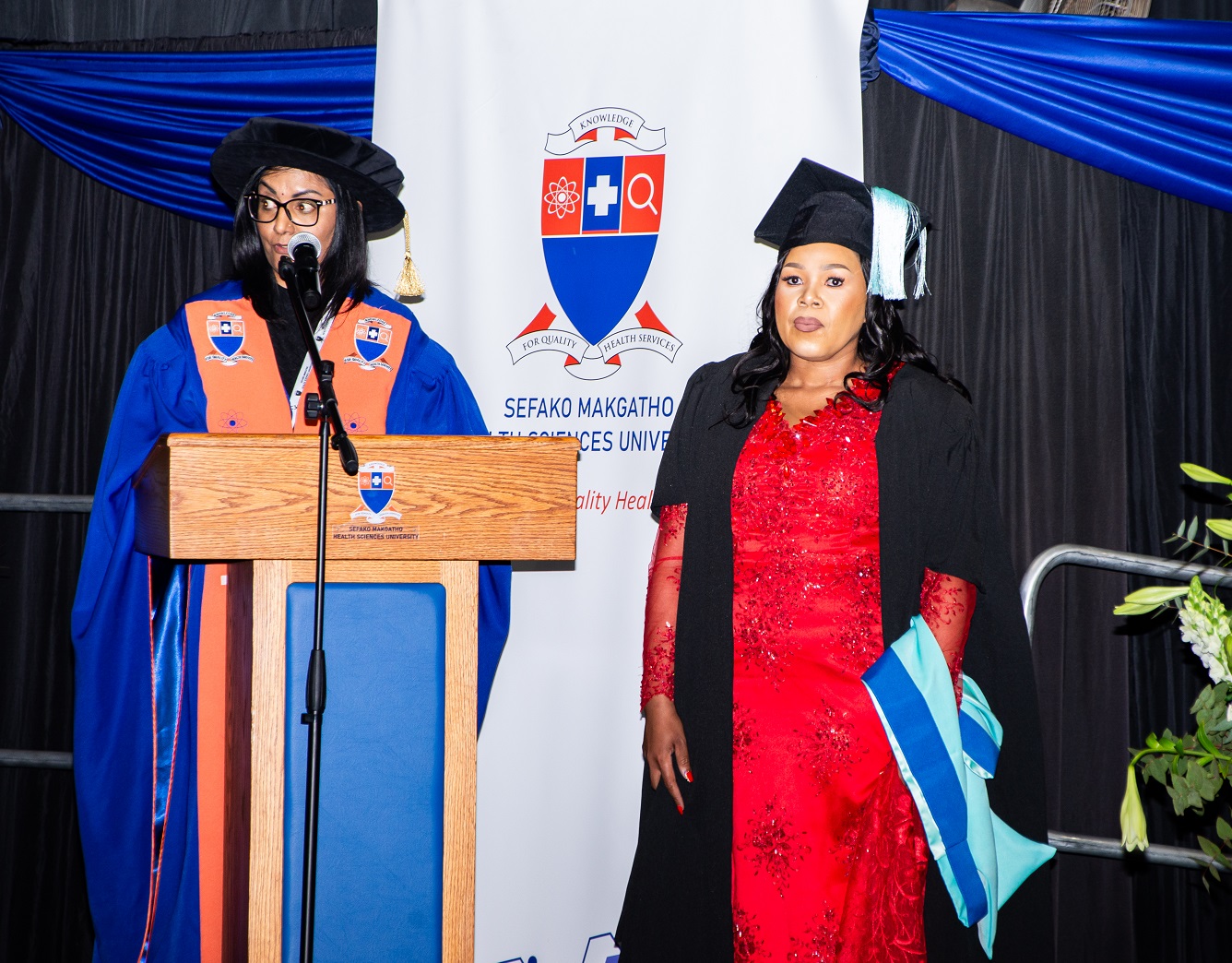 Her journey began far from the lecture halls of SMU. Growing up in Mmotong wa Perekisi (Limpopo), she faced the challenges of childhood obesity and the teasing that came with it. “I thought if I became a doctor, I’d find the miracle cure for obesity,” she recalls. While that cure never materialised, the determination to make a difference in health never left her. Books became her track, medicine her race.
Her journey began far from the lecture halls of SMU. Growing up in Mmotong wa Perekisi (Limpopo), she faced the challenges of childhood obesity and the teasing that came with it. “I thought if I became a doctor, I’d find the miracle cure for obesity,” she recalls. While that cure never materialised, the determination to make a difference in health never left her. Books became her track, medicine her race.
It was while working in anaesthesia that she discovered her true calling. An article by the late Professor Andrew Walubo on the emergence of Clinical Pharmacology as a speciality struck her like lightning. “It was like God saying: Khomotjo, this is your lane. Please stay in it,” she says. From then on, the course was set.
Being the first student of a brand-new programme came with its fair share of turbulence and joyrides, she remembers. “It felt like boarding a brand-new aircraft as the only passenger. At times, I was tempted to reach for the emergency exit, but with my mentors (Dr Memela Makiwane and Prof Elżbieta Osuch) at the controls, the journey touched down smoothly.”
Her dissertation, conducted at a tertiary hospital in Gauteng, examined the knowledge, attitudes and perceptions of medical doctors and pharmacists towards pharmacogenetics. The study found that while attitudes and perceptions were positive, knowledge levels were inadequate, particularly among medical doctors. These results highlight the urgent need for structured education and supportive policy to advance pharmacogenetics in South Africa – a country where genetic diversity and disease burden make its integration into clinical practice especially valuable. For Dr Mothata-Motswaledi, the message is clear: pharmacogenetics holds the potential to transform healthcare, but only if healthcare professionals are adequately prepared and the health system is strengthened to support its implementation.
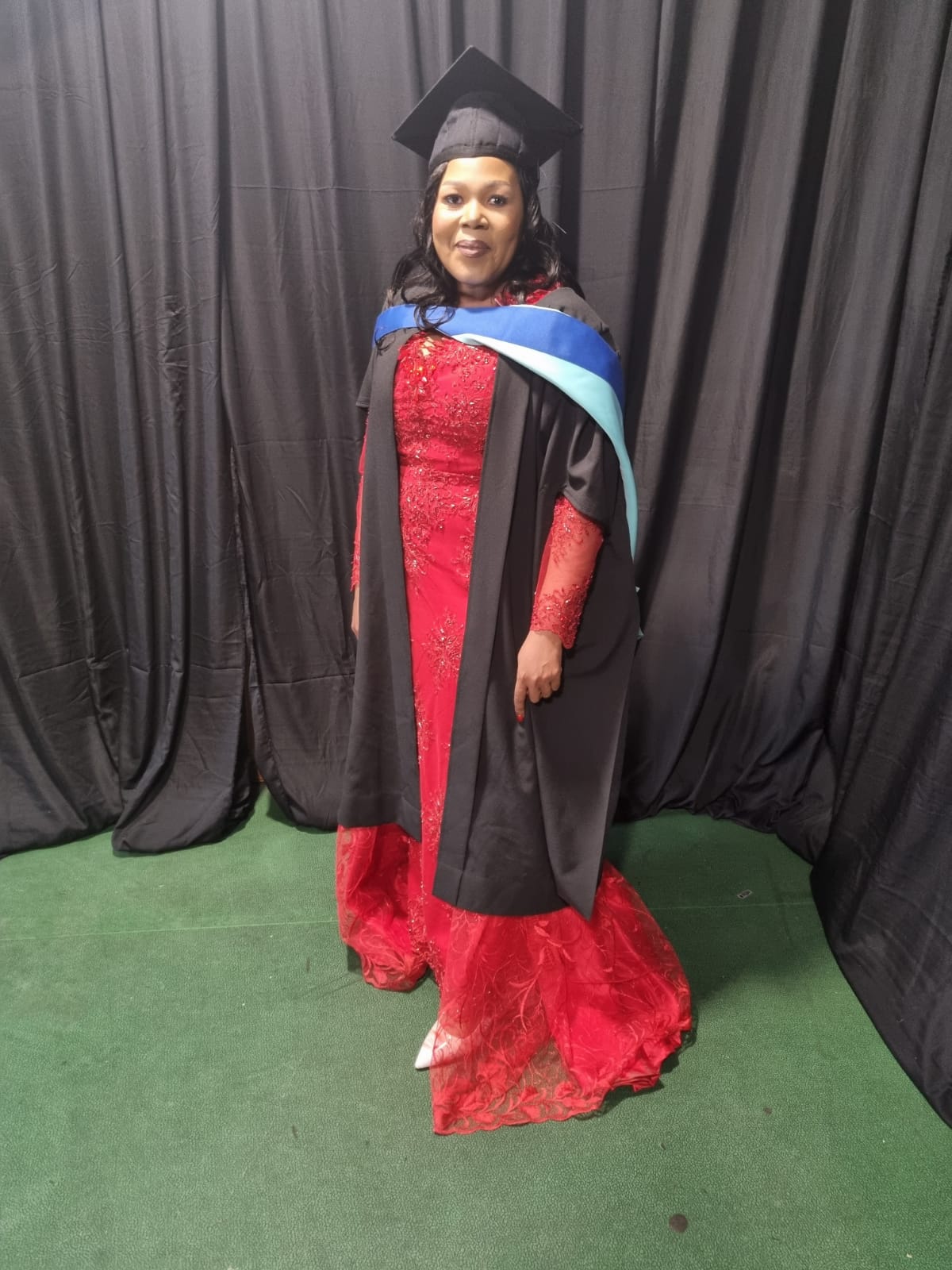 Her achievements, however, are not hers alone. She credits God, her mentors, colleagues, and most of all, her family. “My partner, Prof Hendrick Motswaledi, and our children endured the long nights, the sighs, and the endless question: ‘Mum, are you still reading pharmacology?’ Their love and patience made this journey possible.” She adds: “I also extend my gratitude to Professor Robert Summers and Dr Mabina Mogale for the strong foundation they instilled during my research/academic journey. I would not be where I am today without that grounding.”
Her achievements, however, are not hers alone. She credits God, her mentors, colleagues, and most of all, her family. “My partner, Prof Hendrick Motswaledi, and our children endured the long nights, the sighs, and the endless question: ‘Mum, are you still reading pharmacology?’ Their love and patience made this journey possible.” She adds: “I also extend my gratitude to Professor Robert Summers and Dr Mabina Mogale for the strong foundation they instilled during my research/academic journey. I would not be where I am today without that grounding.”
Today, she lectures both undergraduate and postgraduate students, drives discussions at weekly academic meetings, and advocates for stronger pharmacogenetics education and pharmacovigilance. Her mission is both urgent and personal: safer prescribing, fewer adverse drug reactions, and confidence in personalised medicine.
Her advice to aspiring healthcare professionals is both practical and motivating: “Remain curious and committed to learning. Medicine evolves constantly, and engaging with research ensures you stay at the forefront of your field.”
From Limpopo’s dusty classrooms to the forefront of Clinical Pharmacology, Mothata-Motswaledi’s story proves one thing: clarity, persistence, and passion can change the course of medicine in South Africa.
By Tumelo Moila

by Lorato | Oct 2, 2025 | All News, SMU Media, Student Media
At St John’s Old Age Home in Winterveldt, north of Tshwane, the quiet rhythm of daily life was transformed when first-year Nursing and Midwifery students from Sefako Makgatho Health Sciences University (SMU) arrived with energy, warmth, and purpose. For two days, the students stepped beyond their lecture halls and into the lives of the elderly, proving that nursing is as much about compassion as it is about clinical skill.
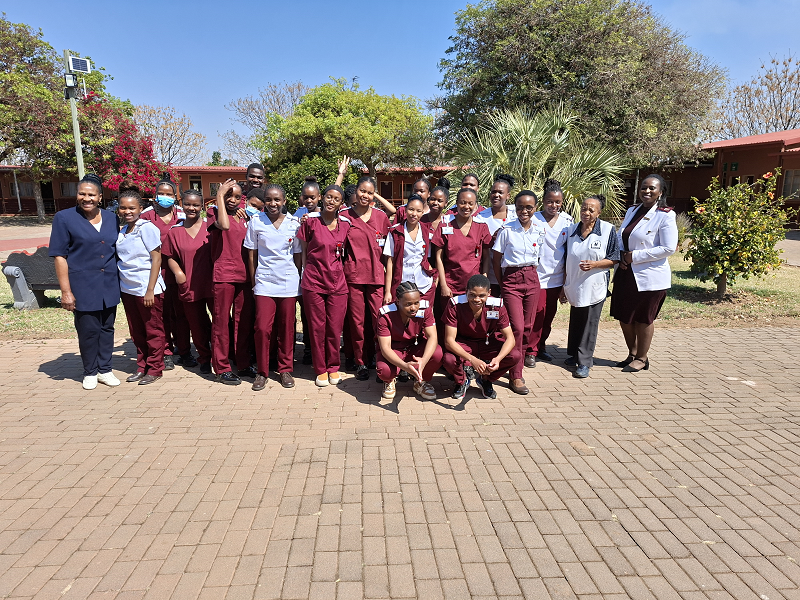 The outreach, guided by the theme “Providing Nursing Care to the Needy Beyond Bedside Nursing”, was led by Clinical Facilitator Marubini Yvonne Rambuwani with the full support of Professor Deliwe Phetlhu, Head of the Nursing Department. Together, they challenged students to see nursing not only as a profession but as a calling rooted in humanity.
The outreach, guided by the theme “Providing Nursing Care to the Needy Beyond Bedside Nursing”, was led by Clinical Facilitator Marubini Yvonne Rambuwani with the full support of Professor Deliwe Phetlhu, Head of the Nursing Department. Together, they challenged students to see nursing not only as a profession but as a calling rooted in humanity.
From the moment they entered the home, the students brought life into its corridors. They offered basic nursing and comfort care, health assessments, grooming services such as safe nail cutting and oral hygiene, and created spaces of companionship that gave residents a renewed sense of dignity. For many, the greatest gift was not medical intervention, but the presence of young people who listened, laughed, and cared.
“The outreach goes beyond clinical skills—it’s about nurturing compassion, respect, and dignity,” reflected Rambuwani. “Our students showed great commitment, and the residents were truly touched by their kindness.”
For the students, the experience was equally profound. Many were engaging with geriatric nursing for the first time, learning that small acts of care—holding a hand, sharing a conversation, offering a smile—could have an impact as powerful as any procedure.
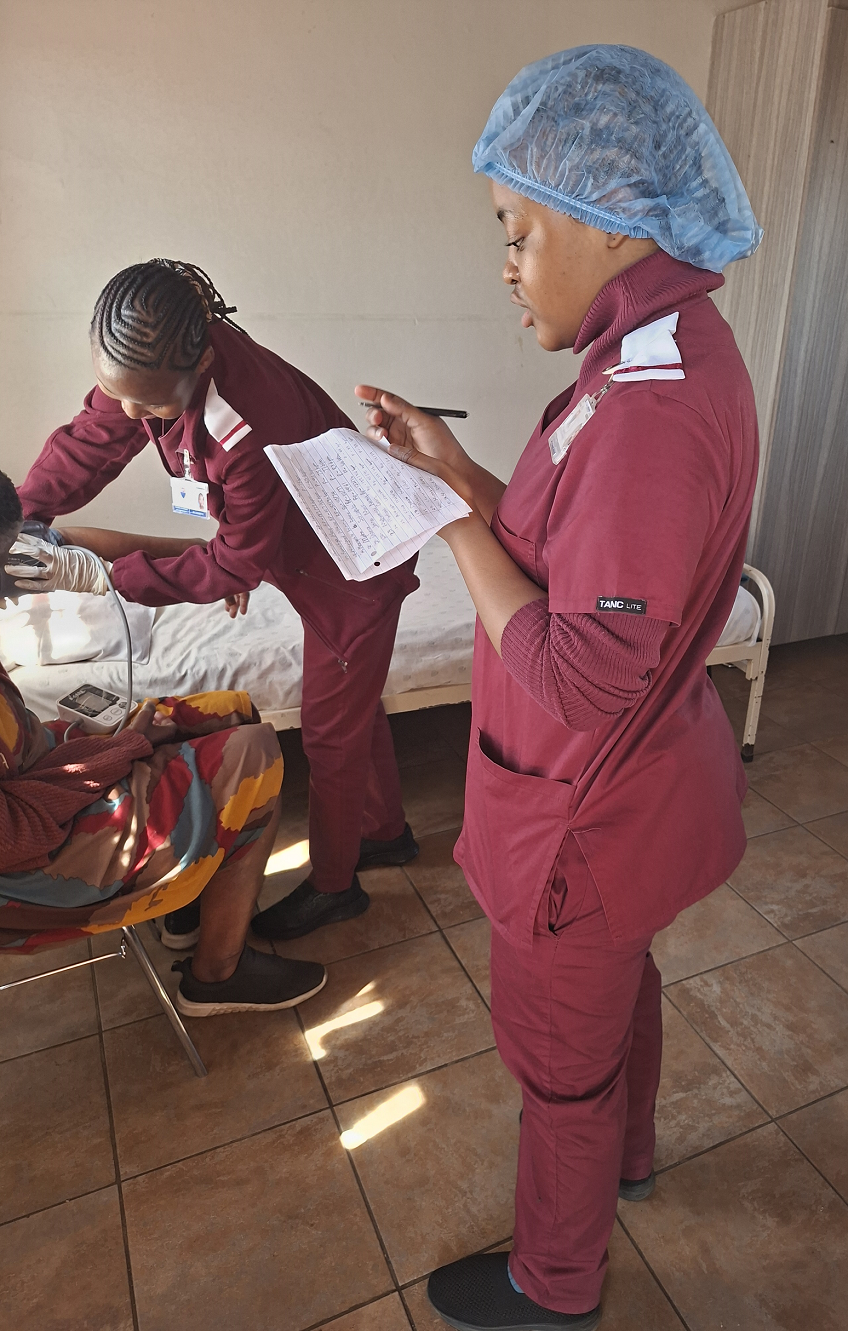 Level 1 BNAM student Noluyanda Maseko captured the feeling: “Being part of this programme made me realise how much of a difference small acts of care can make. The residents were so grateful, and it made me proud to be training as a nurse who can give back to the community.”
Level 1 BNAM student Noluyanda Maseko captured the feeling: “Being part of this programme made me realise how much of a difference small acts of care can make. The residents were so grateful, and it made me proud to be training as a nurse who can give back to the community.”
Professor Phetlhu stressed the importance of embedding such experiences into the Nursing curriculum. For her, community engagement is not an add-on, but a cornerstone of SMU’s vision for health sciences education. “This initiative reflects the essence of nursing as a profession rooted in service,” she said. “It helps our students understand that nursing is not just about procedures, but about respecting humanity and improving quality of life.”
What made the outreach especially meaningful was the recognition that St John’s is not merely a care facility, but the permanent home of its residents. Students were not only tending to health needs—they were stepping into lives, affirming dignity, and strengthening bonds between the University and the community.
As the programme closed, the smiles of both students and residents revealed its impact. For the elderly, it was companionship and care. For the students, it was a lesson in humanity that no textbook could provide.
Through initiatives like these, SMU continues to shape a new generation of nurses—professionals equipped with skill, empathy, and a deep commitment to community well-being.
By Dimakatso Modise

by Lorato | Oct 2, 2025 | All News, SMU Media, Student Media
Dr Mohora Feida Malebatja is a public health lecturer, water and environmental scientist, and a researcher driven by a simple conviction: “Good science must solve real problems.”
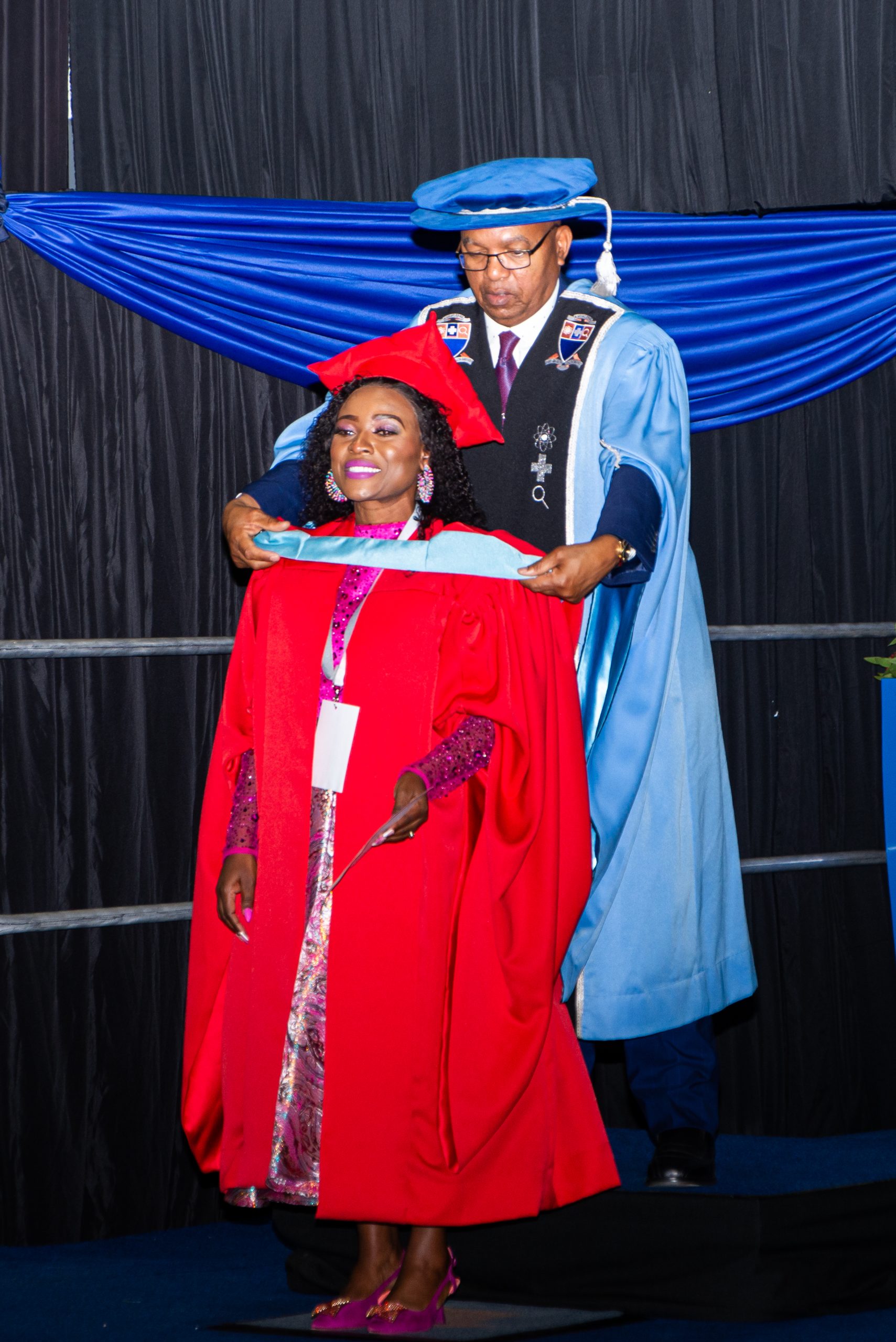 Her career began when the Department of Water and Environmental Affairs awarded her a bursary for her undergraduate and postgraduate studies. That investment set her on a path through senior government roles, including Chief Development Expert in Water Boards Oversight and Manager of Water and Sanitation at the municipal level, before she transitioned into academia.
Her career began when the Department of Water and Environmental Affairs awarded her a bursary for her undergraduate and postgraduate studies. That investment set her on a path through senior government roles, including Chief Development Expert in Water Boards Oversight and Manager of Water and Sanitation at the municipal level, before she transitioned into academia.
Her decision to pursue public health was inspired by her realisation that effective water and sanitation services are not just about infrastructure—they are about protecting human lives. “Every pipe, every treatment plant, every system we build must serve the ultimate purpose of safeguarding health,” she reflects. This understanding deepened during her years of community engagement on projects such as the upgrading of wastewater treatment plants in North West Province and long-term studies addressing acid mine drainage in Gauteng.
Today, as a lecturer in Environmental and Occupational Health at Sefako Makgatho Health Sciences University (SMU), she combines her technical background with her passion for research, teaching, and postgraduate supervision.
But her most significant contribution to date stems from a very personal experience. During her first pregnancy, Dr Malebatja developed unusual cravings for clay soil. Discovering that many women shared this behaviour, known as geophagy, she became curious about its causes and consequences. “At first, I thought it was just me. Then I realised how many women were struggling with the same cravings—and how little we understood about it,” she recalls. That curiosity eventually became the subject of her doctoral research.
Her PhD at SMU examined an environmental health and promotion intervention programme to reduce geophagy among women of childbearing age in the Tshwane District. She found that geophagy, medically defined as a form of pica—the craving and consumption of non-food substances—is widespread among pregnant women across all social groups. While often viewed as a cultural or harmless practice, her research revealed its hidden dangers.
Laboratory analysis of the clay soil consumed by women detected 18 trace elements, including toxic substances such as arsenic and lead. These were linked to serious health risks ranging from iron-deficiency anaemia and fertility complications to organ damage and even cancer. “What shocked me most was how something seen as ‘natural’ or even ‘traditional’ could carry such devastating health risks,” she says. Beyond the chemical threats, the practice of geophagy is linked with the increased risk of maternal, neonatal and childhood morbidities and mortalities, making it a pressing public health concern.
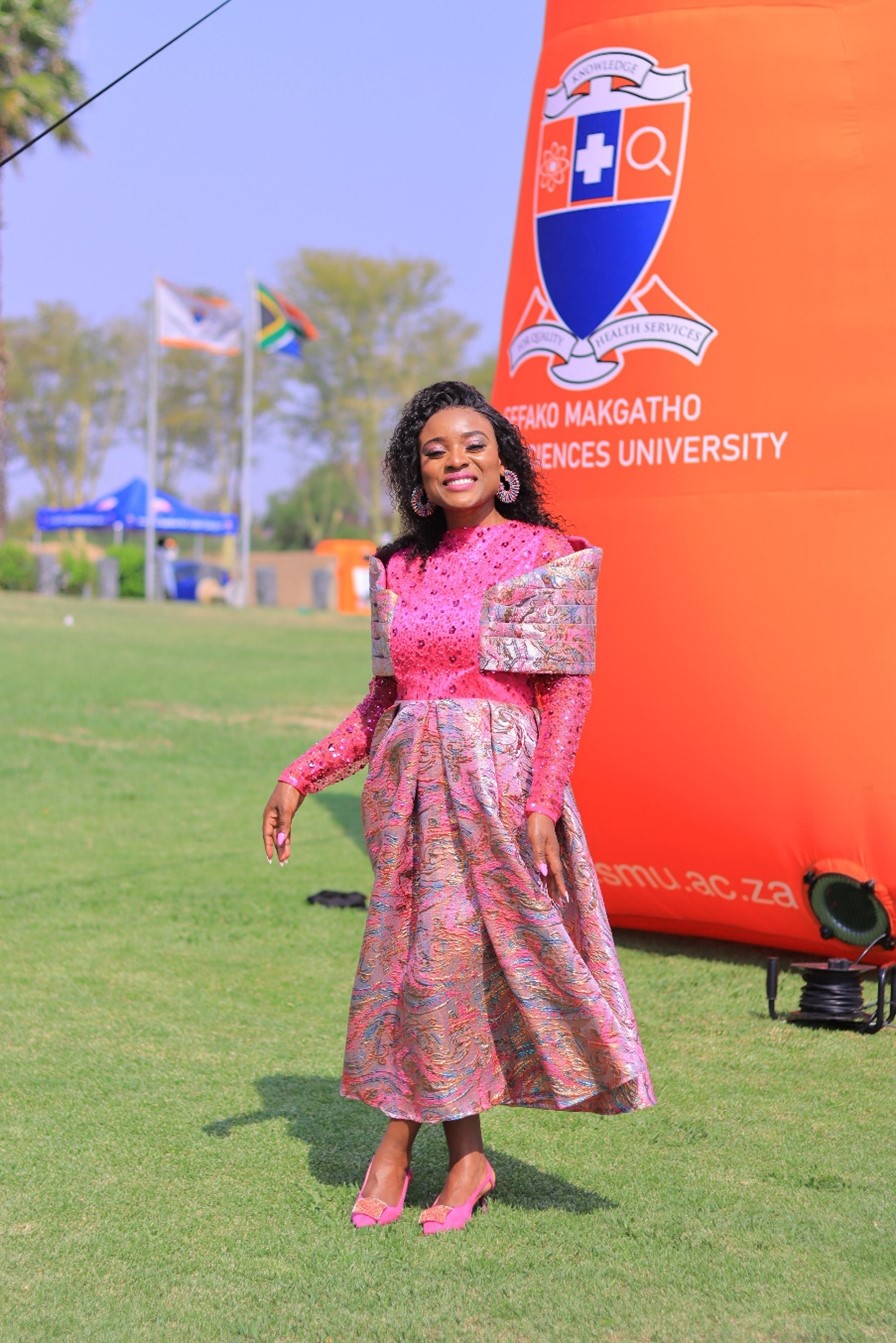 Her intervention programme combined health education, community engagement, and nutritional strategies such as promoting iron-rich foods and supplement adherence. Early results indicated that it not only raised awareness but also encouraged behavioural change, giving women practical tools to replace risky practices with safer alternatives.
Her intervention programme combined health education, community engagement, and nutritional strategies such as promoting iron-rich foods and supplement adherence. Early results indicated that it not only raised awareness but also encouraged behavioural change, giving women practical tools to replace risky practices with safer alternatives.
Malebatja’s PhD journey was not without challenges—bureaucratic delays, shifting supervisors, and even conducting research while pregnant. Yet she persevered. In spite of all the obstacles she faced, she remained positive and determined. Her persistence paid off, with multiple articles published and a policy brief urging the South African government to integrate geophagy education into antenatal care services.
Looking ahead, she aims to expand her research into environmental hazards, mental health, and climate change, while scaling her intervention programme to reach more communities across South Africa and beyond.
Her message is clear and direct: “Geophagy is not harmless. It poses severe health risks for women and their babies. Communities, healthcare workers, and policymakers must work together to address it through education, early detection, and supportive interventions.”
As she reflects on her journey, she extends deep appreciation to her supervisors, Prof. Mokgatle and Prof. Oguntibeju, the Malebatja family, her husband, and her children for their unwavering support.
Dr Malebatja’s work is a reminder that the most impactful research often begins with lived experience—and that science, at its best, transforms lives.
By Tumelo Moila

by Lorato | Oct 2, 2025 | All News, SMU Media, Student Media
The 2025 SMU Internal Leagues have drawn to a close, concluding a season that will be remembered as one of the most significant milestones in student sport at Sefako Makgatho Health Sciences University (SMU). For the first time in the university’s history, both football and netball were contested concurrently, creating a spirited atmosphere of participation, competition and community across campus.
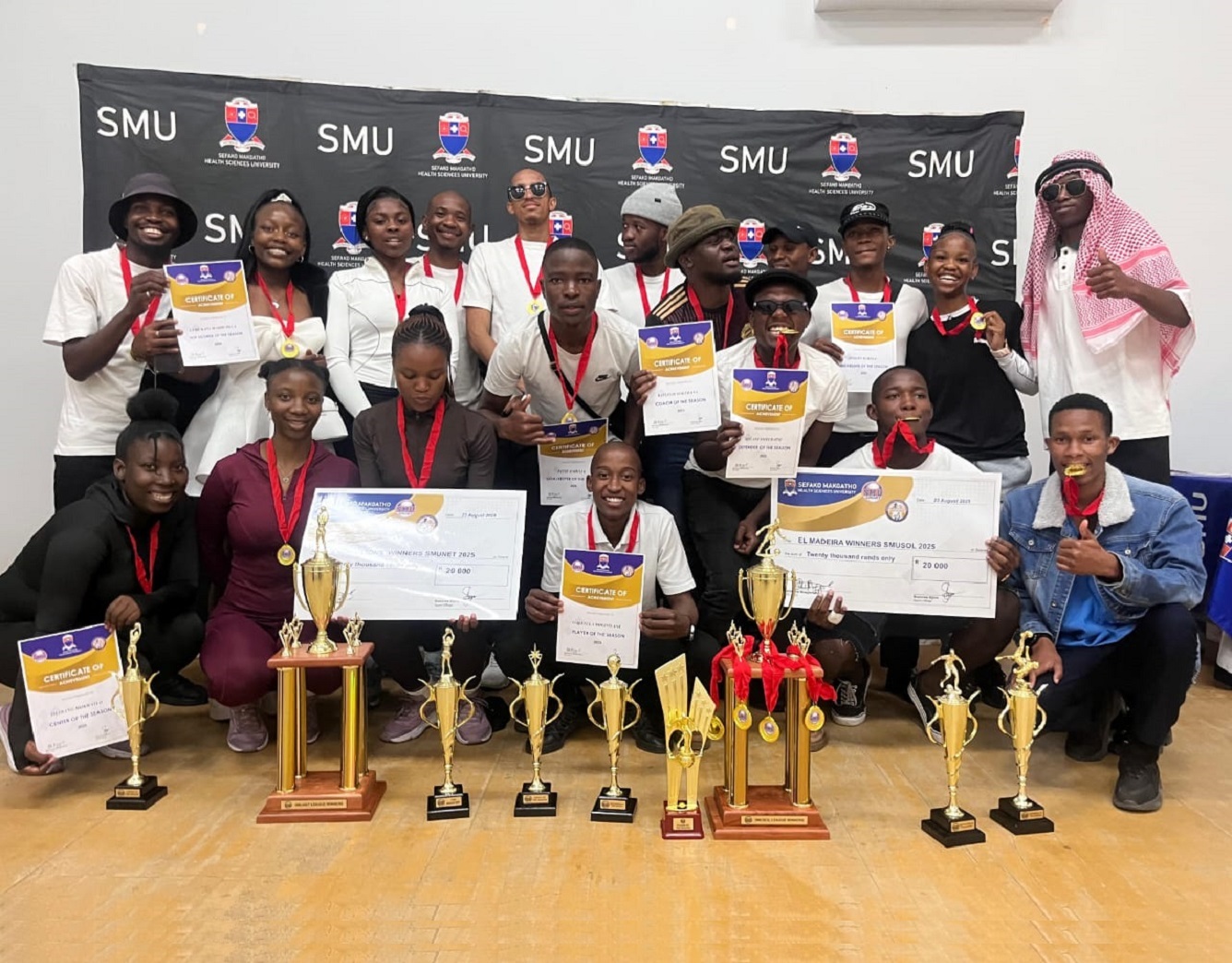 On the football pitch, El Madeira FC emerged victorious after a demanding campaign, securing the championship title and a grand prize of R20,000. Azania United finished as runners-up with R5,500, while SMU PSG FC claimed third place and R2,200 in a league of eight teams under SMUSOL for 2025.
On the football pitch, El Madeira FC emerged victorious after a demanding campaign, securing the championship title and a grand prize of R20,000. Azania United finished as runners-up with R5,500, while SMU PSG FC claimed third place and R2,200 in a league of eight teams under SMUSOL for 2025.
Individual talent was also recognised with a series of awards celebrating the league’s standout performers. Morris Phathitshwana was named the top goal scorer with six goals for Azania United FC. Pitsi Maboja of El Madeira FC was crowned goalkeeper of the season, while Xolani Mothubatsi received the defender of the season award. Godern Maleka represented midfield excellence, and Malesela Mogotlane of El Madeira FC was named overall player of the season, receiving both a trophy and a certificate of excellence.
Leadership off the field was equally acknowledged. Gundani Mudau was awarded team manager of the season for Rangers Brothers United FC, while Katlego Malebana of El Madeira FC was honoured as coach of the season. Having spent five years building his squad, Malebana described the achievement as “an emotional moment that has been a long time in the making”.
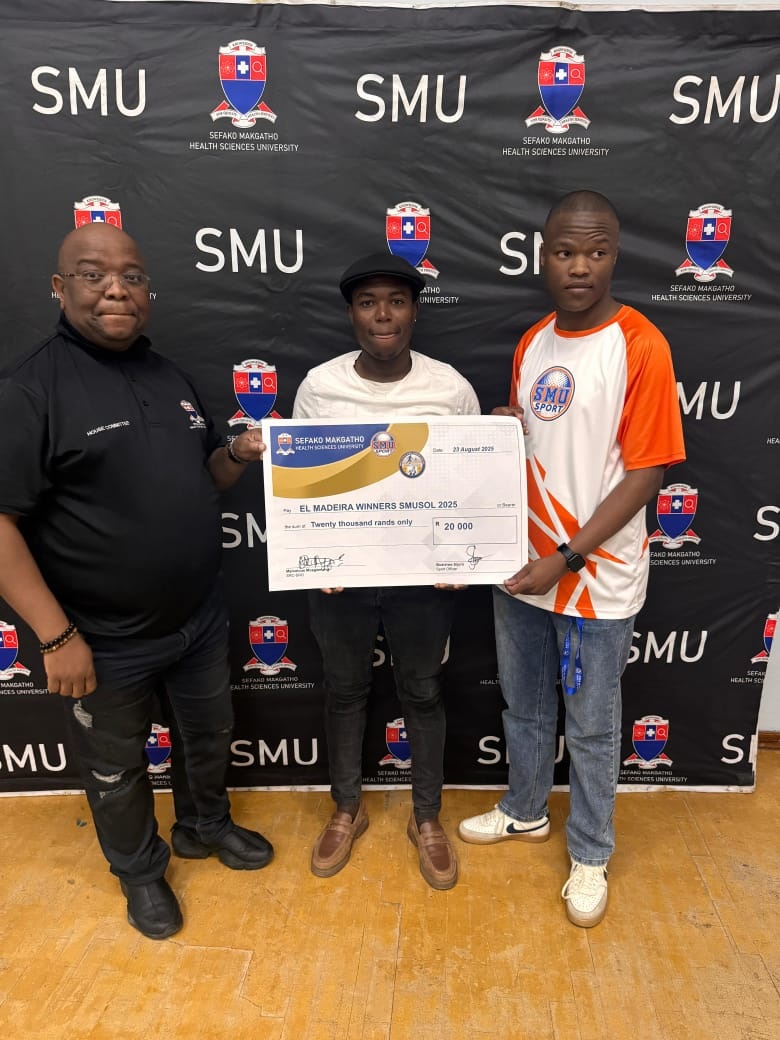 The 2025 season also marked the launch of the inaugural SMU Netball League, which proved to be an outstanding success. Central Lions claimed the championship and R20,000 in prize money, with NetBurners finishing second (R5,500) and El Madeira’s netball side securing third place (R2,200) in a six-team SMUNET league.
The 2025 season also marked the launch of the inaugural SMU Netball League, which proved to be an outstanding success. Central Lions claimed the championship and R20,000 in prize money, with NetBurners finishing second (R5,500) and El Madeira’s netball side securing third place (R2,200) in a six-team SMUNET league.
As in football, individual brilliance shone through. Lemukani Makhubela was named top shooter, while Tania Makhura took the defender of the season award, and Thabang Mokwatlo was recognised as centre of the season. The prestigious player of the season title went to Sinesipho Mpofana. Off the court, Nokwanda Zwane of Team 5A and Mpho Nkuna of El Madeira FC were honoured as team manager and coach of the season, respectively.
Central Lions player Malape Michelle admitted the victory was unexpected but encouraged fellow students to pursue sport with determination: “If you are determined to do something, go for it. Don’t doubt yourself. Sport is where we step out of our comfort zones and discover who we are.”
Reflecting on the season, SMU Sports Officer Busi Sijora praised the growth of the leagues, highlighting their role in fostering leadership and unity. “The inclusion of netball has been a huge success and has added a new dimension to our internal leagues. These competitions are not only about winning but about building community, resilience and opportunity.”
Looking ahead, Sijora confirmed that the leagues will return in 2026, beginning in the second academic term and running throughout the semester. Plans are already underway to expand the number of sporting codes, strengthen talent identification and increase opportunities for student participation.
From El Madeira FC’s triumph on the football pitch to Central Lions’ historic netball victory, the 2025 SMU Internal Leagues celebrated far more than athletic success. They embodied teamwork, perseverance and the unifying spirit of sport at SMU.
By Rose Moreki

by Lorato | Oct 2, 2025 | All News, Alumni, SMU Media, Student Media
The Department of Occupational Therapy at Sefako Makgatho Health Sciences University (SMU) brought past and present together in a vibrant celebration during Occupational Therapy (OT) Week 2025. Themed “Occupational Therapy: Then and Now – Legacy Day”, the event transformed the department’s OT gym into a space of memory, mentorship, and motivation, where alumni and students gathered to reflect on the profession’s journey and its enduring impact.
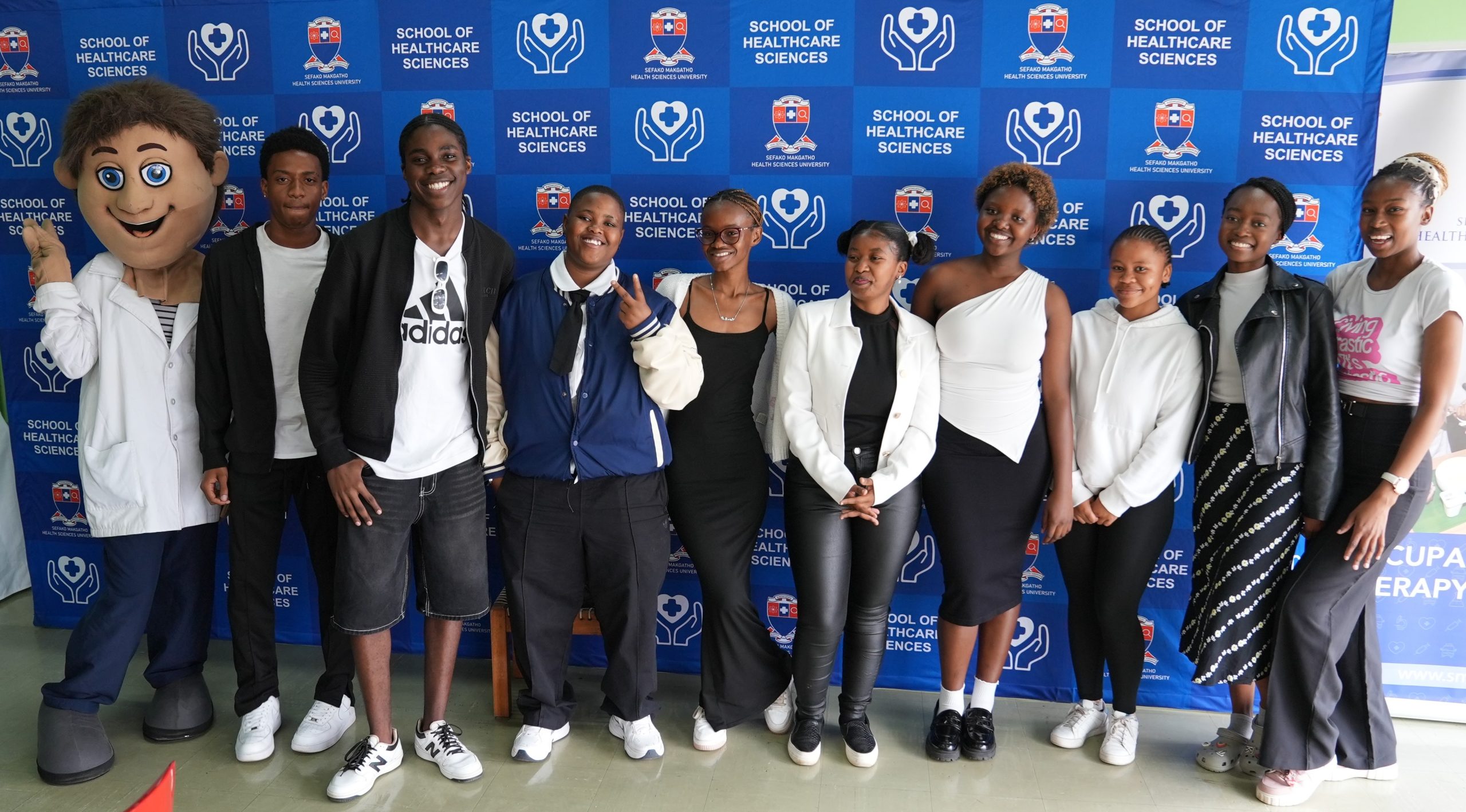 Organised in collaboration with the Occupational Therapy Association of South Africa (OTASA), the gathering paid tribute to senior practitioners while guiding the hands and minds of those just beginning their careers. Acting Head of Department, Anna Lesunyane, captured the essence of the day when she remarked, “It is wonderful to see our students engaging with their seniors, learning from their experiences, and reflecting on the rich history of occupational therapy in South Africa. This is how we build a strong, connected OT community.”
Organised in collaboration with the Occupational Therapy Association of South Africa (OTASA), the gathering paid tribute to senior practitioners while guiding the hands and minds of those just beginning their careers. Acting Head of Department, Anna Lesunyane, captured the essence of the day when she remarked, “It is wonderful to see our students engaging with their seniors, learning from their experiences, and reflecting on the rich history of occupational therapy in South Africa. This is how we build a strong, connected OT community.”
The heartbeat of the day came from alumni who returned to their alma mater, each carrying stories that blended personal triumph with professional purpose.
For Samuel Chauke, SMU graduate and current Mr World South Africa (2024–2026), the journey began in 2018 with a Bachelor of Occupational Therapy degree. Today, as a Senior Occupational Therapist at Potchefstroom Hospital, Chauke sees the profession as a force that restores dignity and hope. He spoke with conviction about the transformative role of vocational rehabilitation, reminding students that dedication and passion are the keys to meaningful community change. His words struck a chord, leaving many inspired to carry that same determination forward.
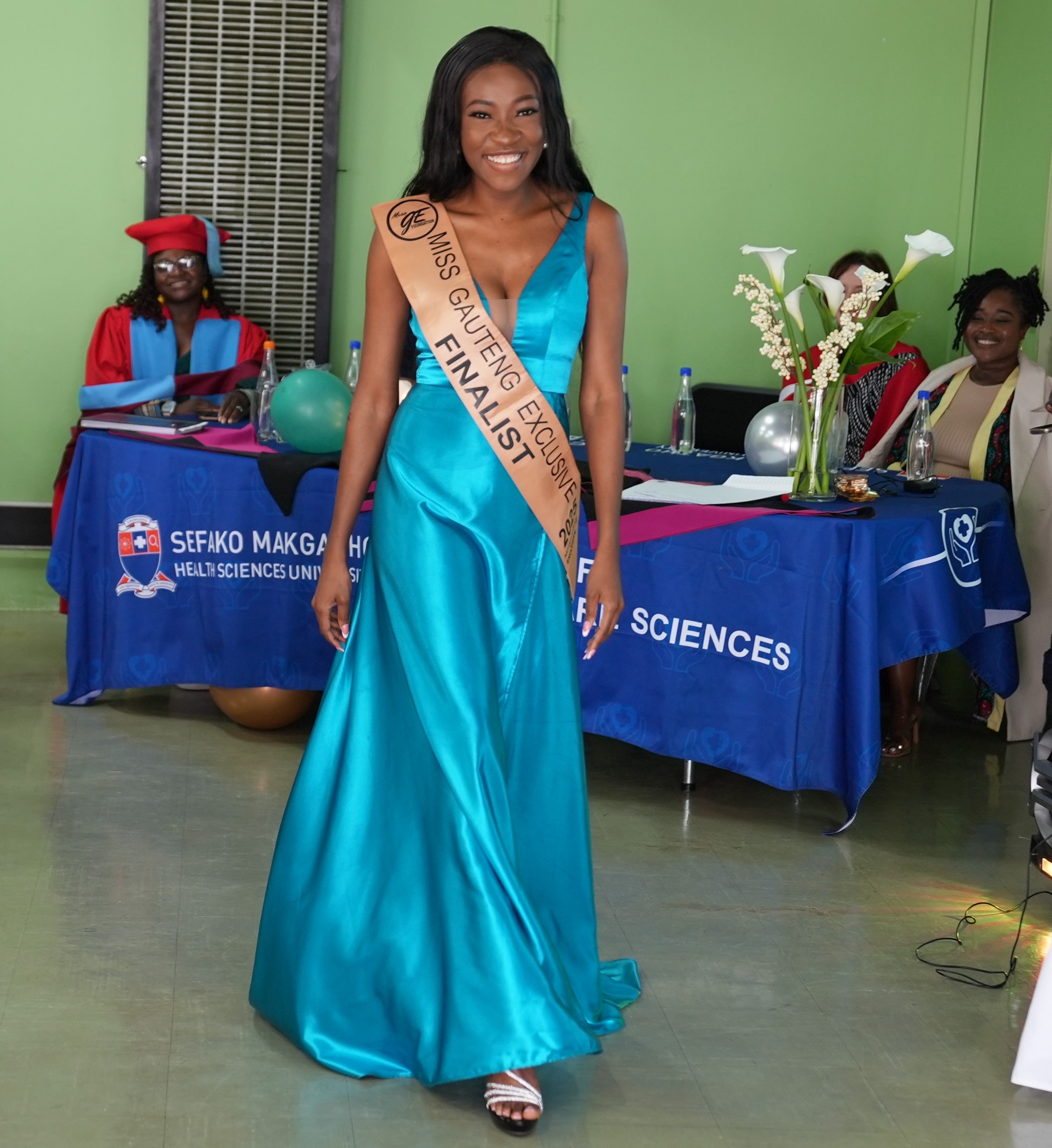 Khanyisile Mabena, another proud SMU alumna, brought her own story of impact. A Miss Gauteng Exclusive finalist and Occupational Therapist at Weskoppies Hospital, Mabena, told students that occupational therapy must be seen as more than a career. “Occupational therapy is not just a profession; it is a calling to make a difference every day,” she said. Her message extended beyond clinical practice, highlighting the profession’s reach into schools, families, and communities.
Khanyisile Mabena, another proud SMU alumna, brought her own story of impact. A Miss Gauteng Exclusive finalist and Occupational Therapist at Weskoppies Hospital, Mabena, told students that occupational therapy must be seen as more than a career. “Occupational therapy is not just a profession; it is a calling to make a difference every day,” she said. Her message extended beyond clinical practice, highlighting the profession’s reach into schools, families, and communities.
Adding yet another dimension was alumna Millicent Daoduo, who spoke passionately about collaboration in education. Addressing the theme “The Collaborative Partnership between Teachers and Occupational Therapists in Public Special Schools in South Africa”, she emphasised that teamwork between educators and therapists can create inclusive environments for children with special needs. “When teachers and occupational therapists work together, we create inclusive environments that empower children with special needs. It’s about teamwork, understanding, and ensuring that every child can thrive,” she explained.
Together, these stories formed a powerful narrative of what it means to be an occupational therapist in today’s South Africa: a blend of science and service, of skill and compassion.
For students, the event was not just an academic exercise. It was a rare chance to connect with role models who had once walked the same halls, sat in the same lectures, and now stood before them as leaders in hospitals, schools, and communities. The atmosphere was alive with questions, reflections, and the realisation that they too are part of a growing legacy.
As the day drew to a close, Lesunyane reminded all present that learning is a lifelong journey. “Legacy Day is a reminder that learning never stops. Our alumni are living proof that occupational therapy changes lives, not only for clients but also for practitioners themselves,” she said.
Students left the OT gym with renewed motivation, proud to belong to a profession that blends knowledge with humanity. The event reaffirmed SMU’s commitment to producing therapists who are both clinically excellent and socially responsive. Through initiatives such as OT Week, the Department of Occupational Therapy continues to nurture a legacy of healing, innovation, and transformation—one generation guiding the next.
By Dimakatso Modise

by Lorato | Sep 23, 2025 | Accolades and Achievements, All News, SMU Media, Student Media
A new era of healthcare education has begun at Sefako Makgatho Health Sciences University (SMU). Fifty-six second-year nursing students recently participated in Africa’s first virtual reality (VR)–based assessment, a ground-breaking pilot that redefines how future healthcare professionals are trained. SMU’s initiative demonstrates a bold commitment to innovation, blending technology and education to prepare students for the demands of modern clinical practice.
 The Department of Nursing, in partnership with Rekindle Learning and SMU’s Centre for University Teaching and Learning (CUTL), introduced students to a fully immersive VR experience. In a safe, controlled environment, learners applied theoretical knowledge to simulated real-world scenarios. From the first moment, the atmosphere was electric, students engaged actively, made clinical decisions, and honed skills in ways traditional assessments cannot match.
The Department of Nursing, in partnership with Rekindle Learning and SMU’s Centre for University Teaching and Learning (CUTL), introduced students to a fully immersive VR experience. In a safe, controlled environment, learners applied theoretical knowledge to simulated real-world scenarios. From the first moment, the atmosphere was electric, students engaged actively, made clinical decisions, and honed skills in ways traditional assessments cannot match.
“VR is more than a novel tool; it challenges students to think differently and enhances their confidence as practitioners,” said Thandokazi Ikedinobi, Manager of the eLearning and Instructional Technologies Unit at CUTL. Students embraced the technology with enthusiasm, demonstrating adaptability and eagerness to explore this new dimension of learning.
For the School of Health Care Sciences (SHCS), the programme is a source of pride. Dr Vuyokazi Soga, School Operations Manager, highlighted the significance of being the first African university to implement VR-based assessments. “This pilot is a testament to visionary leadership and a commitment to equipping students for the evolving realities of healthcare,” she noted.
 Rekindle Learning’s Chief Executive Officer (CEO), Sally Nhlanhla, echoed the sentiment, emphasising the broader vision: to make VR a mainstream educational tool across Africa. “Partnering with SMU allows us to empower students not just with knowledge, but with the tools to shape the future of healthcare delivery,” she said.
Rekindle Learning’s Chief Executive Officer (CEO), Sally Nhlanhla, echoed the sentiment, emphasising the broader vision: to make VR a mainstream educational tool across Africa. “Partnering with SMU allows us to empower students not just with knowledge, but with the tools to shape the future of healthcare delivery,” she said.
Though currently focused on nursing, the potential of VR assessments extends across disciplines. Feedback from students, lecturers, and administrators will refine the programme and may pave the way for adoption in pharmacy, dentistry, and medicine. If scaled, VR could become a cornerstone of SMU’s teaching model, offering risk-free, engaging, and accelerated learning experiences that bridge the gap between theory and practice.
What sets this achievement apart is not only the technology itself but the culture of support within the Department of Nursing. The presence of the full team during the assessments reflected a dedication to excellence, innovation, and student development. By embracing new teaching methods and standing alongside learners, the department set a benchmark in leadership that inspires both students and colleagues.
This milestone signals more than innovation—it represents a bold statement that African universities can lead in redefining education through technology. For the 56 nursing students who participated, the experience extends beyond the VR headset: it equips them with practical skills, confidence, and a pioneering spirit that will guide their journey as healthcare professionals.
SMU’s VR pilot marks a transformative step in African higher education, showing that when ambition meets technology, learning is limited only by imagination.
By Dimakatso Modise

by Lorato | Sep 23, 2025 | All News, SMU Media, Student Media
Dr Ntsieni Teresia Dzhugudzha is not only a lecturer and researcher—she is a barrier breaker. Her academic journey tells a story of resilience, purpose, and groundbreaking research in occupational therapy that is already shaping the future of inclusive education and employment in South Africa.
 In 2025, she completed her PhD at the University of Pretoria, producing a conceptual framework designed to help learners with mild intellectual disability (MID) transition from school into meaningful work. The framework, created for use by occupational therapists, teachers, and employers, promotes strength-based, individualised approaches to employability and advocates for equitable opportunities in the labour market.
In 2025, she completed her PhD at the University of Pretoria, producing a conceptual framework designed to help learners with mild intellectual disability (MID) transition from school into meaningful work. The framework, created for use by occupational therapists, teachers, and employers, promotes strength-based, individualised approaches to employability and advocates for equitable opportunities in the labour market.
Her doctoral journey, which began in 2019, was not without challenges. She faced delayed site access, employers reluctant to participate, and personal health setbacks that cost her nearly a year. Yet she persevered with determination. “I recognise that success for women in academia often comes with considerable obstacles,” she reflects. “But I learned patience, resilience, and problem-solving along the way.”
Her decision to pursue this research stemmed from concern about the limited employment opportunities available to learners with intellectual disabilities. In South Africa, many young people leave Learners with Special Educational Needs (LSEN) schools between the ages of 18 and 21, only to face unemployment at home. Determined to change this reality, she set out to design practical, inclusive solutions that could transform how society prepares these learners for the workplace.
Her academic promise showed early. Born in the rural village of Mashamba Mukondeni in Venda, she excelled in mathematics at Tshikhuthula Secondary School. After matriculating, she entered MEDUNSA (now SMU) with hopes of studying Medicine through the BSc (Special) programme. When she was not admitted into Medicine, she chose Occupational Therapy, a path that revealed itself as her true calling. Between 2003 and 2006, she completed her Bachelor of Occupational Therapy with merit awards and soon after entered clinical practice. For nearly a decade, she worked across health facilities, earning recognition such as the Best Allied Health Professional Award at Odi District Hospital in 2014.
Alongside her practice, she pursued further studies and, in 2015, completed a master’s in public health at SMU under the mentorship of Professor Simphiwe Madiba. This experience cemented her passion for research. Her transition into academia began naturally while working at Weskoppies Hospital, where she supervised occupational therapy students from both SMU and the University of Pretoria. Discovering her love for teaching, she joined SMU’s Department of Occupational Therapy in 2017 as a Lecturer. Since then, she has taught across undergraduate levels, supervised postgraduate research, contributed to committees on community engagement and research, and served as an external examiner for universities across the country.
Balancing her academic and personal life has been one of her proudest achievements. A wife and mother of three daughters, she completed her master’s degree while pregnant with twins and working full-time. Her ability to balance teaching, research, and family responsibilities speaks to her determination. In 2025, she published two journal articles from her PhD and presented her findings at national conferences, extending her influence into scholarly and policy spaces.
She credits SMU for providing crucial support during her doctoral journey, including funding, study leave, writing retreats, and research grants. “The institution created the environment I needed to thrive,” she says with gratitude. Looking ahead, she envisions her PhD as the foundation for greater societal impact. She aspires to influence policy, mentor future occupational therapists, and advocate tirelessly for inclusive employment practices.
Her message to aspiring SMU students is inspiring: “A PhD is achievable, but it requires discipline, patience, and resilience. Write consistently, even a paragraph a day. The journey is about growth and impact, not just the qualification.”
For Dzhugudzha, completing her PhD represents more than the culmination of years of effort. It marks the beginning of a broader mission: breaking barriers, transforming lives, and paving the way for inclusive opportunities in education and employment.
By Dimakatso Modise

by Lorato | Sep 23, 2025 | All News, SMU Media, Student Media
Scholars from the Departments of Chemistry at Sefako Makgatho Health Sciences University (SMU) joined leading researchers from across South Africa at the 10th Collaboration Symposium, hosted by the Centre for Rubber Science & Technology and the Department of Chemistry at Nelson Mandela University (NMU). Held on 11–12 September at NMU’s Ocean Sciences Campus, the symposium marked a significant milestone, showcasing innovative solutions to some of Africa’s most pressing scientific and societal challenges.
 For two days, scholars, industry experts, and emerging scientists converged to tackle Africa’s most pressing research challenges. The symposium’s message was clear: collaboration is not an option; it is a necessity. Over the past decade, the event has grown into one of the continent’s premier platforms for multidisciplinary research, fostering networks that span institutions and disciplines.
For two days, scholars, industry experts, and emerging scientists converged to tackle Africa’s most pressing research challenges. The symposium’s message was clear: collaboration is not an option; it is a necessity. Over the past decade, the event has grown into one of the continent’s premier platforms for multidisciplinary research, fostering networks that span institutions and disciplines.
SMU’s presence was particularly strong. Scholars from the Department of Chemistry made significant contributions to the programme, underscoring the university’s growing reputation for innovative, cross-disciplinary science. Senior Professor and Head of the Material Science Niche Area at SMU, Tshwafo Motaung, highlighted the benefits and purpose of collaboration. In essence, the symposium was established to shine a spotlight on African scholars, particularly the designated group, in alignment with the vision of the National Development Plan. Dr Dan Molefe (SMU Chemistry staff) expanded the symposium’s focus on applied sciences of flame-retardant materials. A standout moment came from Mmabatho Matlaila (SMU Chemistry MSc), whose presentation on green nanotechnology using banana peels drew widespread attention. “We need to look at our local resources differently,” she explained. “Banana peels are often discarded as waste, yet they hold the potential to contribute to sustainable innovation.” Her work demonstrated how African ingenuity can turn everyday materials into global solutions.
The line-up of speakers reflected the depth of African scholarship. Dr Lungelwa Mahanjana of NMU explored the cross-disciplinary impact of natural products in her talk titled “Beyond Molecules.” Professor Linda Linganiso of UNISA highlighted how adding value to waste can drive a circular economy, while Dr Nobathembu Faleni of Walter Sisulu University showcased how invasive Lantana camara plants could be turned into useful products. Emerging voices also made their mark, with Mr Zwivhuya Munyai of NMU presenting on flame-resistant conveyor belts made from recycled tyres, and Dr Jane Nkhebeyane emphasised the need to engage solution-driven projects.
 The energy among students and early-career researchers was particularly inspiring. Prof Motaung observed, “These young scholars are not just talking about problems, they are already designing the solutions Africa needs, and that gives hope that one day Africa will set its research agenda.”
The energy among students and early-career researchers was particularly inspiring. Prof Motaung observed, “These young scholars are not just talking about problems, they are already designing the solutions Africa needs, and that gives hope that one day Africa will set its research agenda.”
While the enthusiasm was palpable, participants acknowledged that the real challenge lies ahead. As Prof Lehlohonolo Koao (University of the Free State) put it, “The proof is in the pudding. We must ensure these collaborations go beyond conferences and result in tangible outcomes.”
Motaung expressed confidence that the partnerships forged at the Ocean Sciences Campus would outlive the event, fuelling projects that address Africa’s most urgent needs: sustainable energy, environmental stewardship, and industrial innovation.
This symposium was not just about sharing research; it was about shaping the continent’s future. By building networks across universities and disciplines, SMU is positioning itself as a catalyst for solutions grounded in African contexts. A decade in, the Collaboration Symposium has become more than a conference; it is a launchpad for action. And if the energy of 2025 is any indication, the next decade promises breakthroughs that will redefine how Africa innovates for itself and the world.
By Tumelo Moila

by Lorato | Sep 23, 2025 | All News, SMU Media, Student Media
In a world where food security and public health are inseparable, Dr Olawole Emmanuel Aina stands out as a scientist whose work bridges agriculture, environmental safety, and human well-being. His journey to a PhD in Science reflects not only academic excellence but also an unyielding drive to address one of society’s most pressing challenges: how to feed a growing population without compromising health or the environment. “Sustainable agriculture isn’t just about crops; it’s about protecting people and the planet,” says Dr Aina, capturing the philosophy behind his research.
 Dr Aina’s academic pathway demonstrates a natural progression of curiosity and commitment. Beginning with a BSc in Biological Sciences, followed by a Master’s in Zoology, he has now culminated his studies with a PhD focused on food safety and agricultural sustainability. His decision to pursue doctoral research, he explains, was motivated by the opportunity to deepen scientific expertise, contribute to global challenges, and inspire the next generation of scientists. “I wanted my research to have a practical impact – to guide farmers and reassure consumers,” he reflects.
Dr Aina’s academic pathway demonstrates a natural progression of curiosity and commitment. Beginning with a BSc in Biological Sciences, followed by a Master’s in Zoology, he has now culminated his studies with a PhD focused on food safety and agricultural sustainability. His decision to pursue doctoral research, he explains, was motivated by the opportunity to deepen scientific expertise, contribute to global challenges, and inspire the next generation of scientists. “I wanted my research to have a practical impact – to guide farmers and reassure consumers,” he reflects.
At Sefako Makgatho Health Sciences University (SMU), Dr Aina investigated the trace metal uptake, nutritional composition, and microbial quality of lettuce (Lactuca sativa) and carrots (Daucus carota) grown in soils treated with organic manure and inorganic fertilisers. The choice of these crops was deliberate. As vegetables are widely consumed raw, often without decontamination, they are critical indicators of food safety risks.
The findings were striking. While organic manure improved mineral content, it also carried significant risks. Vegetables grown in soil amended with sewage sludge, for instance, showed potential exposure to non-carcinogenic diseases and harboured higher loads of faecal bacteria than those cultivated with inorganic fertilisers. These insights challenge the popular perception that “organic” automatically means safer or healthier. “Organic does not always mean safe. We must look beyond labels to science,” Dr Aina emphasises.
His research underscores a nuanced truth: sustainability requires balance. He advocates for combining organic and inorganic fertilisers to optimise soil fertility, enhance crop nutrition, and protect consumer health. Beyond farming practice, his recommendations speak directly to policymakers. He urges tighter regulation of organic amendments, mandatory treatment of sewage sludge before agricultural use, and more rigorous inspections of production sites and retail outlets. “Good policy, backed by scientific evidence, is essential for safe food systems,” he insists.
The journey, however, was not without challenges. The COVID-19 pandemic delayed fieldwork and laboratory access, while limited equipment forced him to outsource key analyses. Yet these obstacles reinforced a lesson he now shares with aspiring doctoral students: begin with what you have rather than waiting for perfect conditions. “Perfection is a luxury; progress comes from using what’s available,” he advises.
 For Dr Aina, the most rewarding aspect of his PhD journey has been disseminating his findings – not only through peer-reviewed publications but also to farmers and consumers who can apply them directly. “Seeing farmers adopt safer practices makes every challenge worthwhile,” he reflects.
For Dr Aina, the most rewarding aspect of his PhD journey has been disseminating his findings – not only through peer-reviewed publications but also to farmers and consumers who can apply them directly. “Seeing farmers adopt safer practices makes every challenge worthwhile,” he reflects.
Looking ahead, Dr Aina sees great promise in the future of sustainable agriculture in South Africa and across the continent, provided innovation, policy, investment, and inclusivity align. His next steps remain anchored in higher education, where he intends to continue blending research, teaching, and community engagement.
His message is clear: sustainable farming and safe food production are collective responsibilities. Protecting soil, reducing harmful inputs, and ensuring food safety are interconnected commitments that must be shared by farmers, consumers, scientists, and policymakers alike. “Our soil, our food, our health – they are inseparable. Together, we must protect them,” he concludes.
By Tumelo Moila

by Lorato | Sep 23, 2025 | All News, SMU Media, Student Media
The psychiatry wards at Jubilee District Hospital, in Hamaanskraal, came alive with music, colour, and laughter as fourth-year Occupational Therapy (OT) students from Sefako Makgatho Health Sciences University (SMU) hosted a vibrant Heritage Month celebration. The event blended cultural pride with therapeutic purpose, reminding everyone present of the profound role occupational therapy plays in supporting mental health.
 OT is more than treatment; it is about helping people reclaim meaning in their daily lives despite illness or limitation. At Jubilee Hospital, OT students work alongside mental health care users to build confidence, develop skills, and promote independence. This Heritage Month initiative extended those principles beyond the therapy room. Patients engaged in traditional crafts, songs, and performances, celebrating identity and culture in an inclusive, healing environment.
OT is more than treatment; it is about helping people reclaim meaning in their daily lives despite illness or limitation. At Jubilee Hospital, OT students work alongside mental health care users to build confidence, develop skills, and promote independence. This Heritage Month initiative extended those principles beyond the therapy room. Patients engaged in traditional crafts, songs, and performances, celebrating identity and culture in an inclusive, healing environment.
“Activities like these are essential for our patients,” explains Mmabatho Mosoma, Head of the OT Department at Jubilee Hospital. “They create belonging, reconnect patients to their roots, and offer joy with therapeutic value. Celebrations are not just fun—they are treatment in action.”
The wards were transformed into spaces of creativity and connection. Patients collaborated with students to craft cultural items, share stories, and perform traditional songs. Far from mere entertainment, these activities reduced anxiety, encouraged social interaction, and boosted self-esteem—elements central to psychiatric rehabilitation.
For the students, the event was more than a practical exercise. It was a farewell gift to the patients after seven weeks of training. “This celebration was especially meaningful,” reflects Tshireletso Tshimpa, a fourth-year OT student. “It was our final day, and we wanted to leave something lasting. Engaging in cultural activities allowed us to apply our learning in real life while giving patients an uplifting experience.”
 The initiative showcased the heart of occupational therapy—empowerment, inclusion, and patient-centred care. By working directly with mental health care users, students sharpened professional skills in empathy, communication, and therapeutic intervention. Patients, in turn, gained opportunities to express themselves, explore identity, and find dignity through creativity.
The initiative showcased the heart of occupational therapy—empowerment, inclusion, and patient-centred care. By working directly with mental health care users, students sharpened professional skills in empathy, communication, and therapeutic intervention. Patients, in turn, gained opportunities to express themselves, explore identity, and find dignity through creativity.
Mashudu Madavha, Therapeutics Manager at Jubilee Hospital, praised the event’s impact. “South Africa’s cultural diversity is one of its greatest strengths. When patients feel connected to it, they feel valued. Cultural engagement reduces stress and restores a sense of normalcy, even in psychiatric wards. This initiative shows how therapy and community can merge to promote wellness.”
The celebration also highlighted how occupational therapy extends beyond conventional health care. It integrates the social, emotional, and cultural dimensions of healing, helping patients not only cope but thrive. For SMU, this approach is central to its curriculum, which emphasises real-world engagement and community-centred learning. Students are expected to immerse themselves in the lived realities of the people they serve, using knowledge to meet health needs while advancing social inclusion.
The day closed with shared songs, handcrafted keepsakes, and heartfelt laughter between patients and students. For the patients, it was a rare moment of celebration and belonging. For the students, it was a lesson in the transformative power of compassion and culture.
Through initiatives like this, SMU’s OT students are proving that healing is not only clinical—it is human. By weaving together culture, creativity, and care, they are shaping a future where patients feel seen, valued, and empowered.
By Dimakatso Modise

 Her journey began far from the lecture halls of SMU. Growing up in Mmotong wa Perekisi (Limpopo), she faced the challenges of childhood obesity and the teasing that came with it. “I thought if I became a doctor, I’d find the miracle cure for obesity,” she recalls. While that cure never materialised, the determination to make a difference in health never left her. Books became her track, medicine her race.
Her journey began far from the lecture halls of SMU. Growing up in Mmotong wa Perekisi (Limpopo), she faced the challenges of childhood obesity and the teasing that came with it. “I thought if I became a doctor, I’d find the miracle cure for obesity,” she recalls. While that cure never materialised, the determination to make a difference in health never left her. Books became her track, medicine her race. Her achievements, however, are not hers alone. She credits God, her mentors, colleagues, and most of all, her family. “My partner, Prof Hendrick Motswaledi, and our children endured the long nights, the sighs, and the endless question: ‘Mum, are you still reading pharmacology?’ Their love and patience made this journey possible.” She adds: “I also extend my gratitude to Professor Robert Summers and Dr Mabina Mogale for the strong foundation they instilled during my research/academic journey. I would not be where I am today without that grounding.”
Her achievements, however, are not hers alone. She credits God, her mentors, colleagues, and most of all, her family. “My partner, Prof Hendrick Motswaledi, and our children endured the long nights, the sighs, and the endless question: ‘Mum, are you still reading pharmacology?’ Their love and patience made this journey possible.” She adds: “I also extend my gratitude to Professor Robert Summers and Dr Mabina Mogale for the strong foundation they instilled during my research/academic journey. I would not be where I am today without that grounding.”

 The outreach, guided by the theme “Providing Nursing Care to the Needy Beyond Bedside Nursing”, was led by Clinical Facilitator Marubini Yvonne Rambuwani with the full support of Professor Deliwe Phetlhu, Head of the Nursing Department. Together, they challenged students to see nursing not only as a profession but as a calling rooted in humanity.
The outreach, guided by the theme “Providing Nursing Care to the Needy Beyond Bedside Nursing”, was led by Clinical Facilitator Marubini Yvonne Rambuwani with the full support of Professor Deliwe Phetlhu, Head of the Nursing Department. Together, they challenged students to see nursing not only as a profession but as a calling rooted in humanity. Level 1 BNAM student Noluyanda Maseko captured the feeling: “Being part of this programme made me realise how much of a difference small acts of care can make. The residents were so grateful, and it made me proud to be training as a nurse who can give back to the community.”
Level 1 BNAM student Noluyanda Maseko captured the feeling: “Being part of this programme made me realise how much of a difference small acts of care can make. The residents were so grateful, and it made me proud to be training as a nurse who can give back to the community.”
 Her career began when the Department of Water and Environmental Affairs awarded her a bursary for her undergraduate and postgraduate studies. That investment set her on a path through senior government roles, including Chief Development Expert in Water Boards Oversight and Manager of Water and Sanitation at the municipal level, before she transitioned into academia.
Her career began when the Department of Water and Environmental Affairs awarded her a bursary for her undergraduate and postgraduate studies. That investment set her on a path through senior government roles, including Chief Development Expert in Water Boards Oversight and Manager of Water and Sanitation at the municipal level, before she transitioned into academia. Her intervention programme combined health education, community engagement, and nutritional strategies such as promoting iron-rich foods and supplement adherence. Early results indicated that it not only raised awareness but also encouraged behavioural change, giving women practical tools to replace risky practices with safer alternatives.
Her intervention programme combined health education, community engagement, and nutritional strategies such as promoting iron-rich foods and supplement adherence. Early results indicated that it not only raised awareness but also encouraged behavioural change, giving women practical tools to replace risky practices with safer alternatives.
 On the football pitch, El Madeira FC emerged victorious after a demanding campaign, securing the championship title and a grand prize of R20,000. Azania United finished as runners-up with R5,500, while SMU PSG FC claimed third place and R2,200 in a league of eight teams under SMUSOL for 2025.
On the football pitch, El Madeira FC emerged victorious after a demanding campaign, securing the championship title and a grand prize of R20,000. Azania United finished as runners-up with R5,500, while SMU PSG FC claimed third place and R2,200 in a league of eight teams under SMUSOL for 2025. The 2025 season also marked the launch of the inaugural SMU Netball League, which proved to be an outstanding success. Central Lions claimed the championship and R20,000 in prize money, with NetBurners finishing second (R5,500) and El Madeira’s netball side securing third place (R2,200) in a six-team SMUNET league.
The 2025 season also marked the launch of the inaugural SMU Netball League, which proved to be an outstanding success. Central Lions claimed the championship and R20,000 in prize money, with NetBurners finishing second (R5,500) and El Madeira’s netball side securing third place (R2,200) in a six-team SMUNET league.
 Organised in collaboration with the Occupational Therapy Association of South Africa (OTASA), the gathering paid tribute to senior practitioners while guiding the hands and minds of those just beginning their careers. Acting Head of Department, Anna Lesunyane, captured the essence of the day when she remarked, “It is wonderful to see our students engaging with their seniors, learning from their experiences, and reflecting on the rich history of occupational therapy in South Africa. This is how we build a strong, connected OT community.”
Organised in collaboration with the Occupational Therapy Association of South Africa (OTASA), the gathering paid tribute to senior practitioners while guiding the hands and minds of those just beginning their careers. Acting Head of Department, Anna Lesunyane, captured the essence of the day when she remarked, “It is wonderful to see our students engaging with their seniors, learning from their experiences, and reflecting on the rich history of occupational therapy in South Africa. This is how we build a strong, connected OT community.” Khanyisile Mabena, another proud SMU alumna, brought her own story of impact. A Miss Gauteng Exclusive finalist and Occupational Therapist at Weskoppies Hospital, Mabena, told students that occupational therapy must be seen as more than a career. “Occupational therapy is not just a profession; it is a calling to make a difference every day,” she said. Her message extended beyond clinical practice, highlighting the profession’s reach into schools, families, and communities.
Khanyisile Mabena, another proud SMU alumna, brought her own story of impact. A Miss Gauteng Exclusive finalist and Occupational Therapist at Weskoppies Hospital, Mabena, told students that occupational therapy must be seen as more than a career. “Occupational therapy is not just a profession; it is a calling to make a difference every day,” she said. Her message extended beyond clinical practice, highlighting the profession’s reach into schools, families, and communities.
 The Department of Nursing, in partnership with Rekindle Learning and SMU’s Centre for University Teaching and Learning (CUTL), introduced students to a fully immersive VR experience. In a safe, controlled environment, learners applied theoretical knowledge to simulated real-world scenarios. From the first moment, the atmosphere was electric, students engaged actively, made clinical decisions, and honed skills in ways traditional assessments cannot match.
The Department of Nursing, in partnership with Rekindle Learning and SMU’s Centre for University Teaching and Learning (CUTL), introduced students to a fully immersive VR experience. In a safe, controlled environment, learners applied theoretical knowledge to simulated real-world scenarios. From the first moment, the atmosphere was electric, students engaged actively, made clinical decisions, and honed skills in ways traditional assessments cannot match. Rekindle Learning’s Chief Executive Officer (CEO), Sally Nhlanhla, echoed the sentiment, emphasising the broader vision: to make VR a mainstream educational tool across Africa. “Partnering with SMU allows us to empower students not just with knowledge, but with the tools to shape the future of healthcare delivery,” she said.
Rekindle Learning’s Chief Executive Officer (CEO), Sally Nhlanhla, echoed the sentiment, emphasising the broader vision: to make VR a mainstream educational tool across Africa. “Partnering with SMU allows us to empower students not just with knowledge, but with the tools to shape the future of healthcare delivery,” she said.
 In 2025, she completed her PhD at the University of Pretoria, producing a conceptual framework designed to help learners with mild intellectual disability (MID) transition from school into meaningful work. The framework, created for use by occupational therapists, teachers, and employers, promotes strength-based, individualised approaches to employability and advocates for equitable opportunities in the labour market.
In 2025, she completed her PhD at the University of Pretoria, producing a conceptual framework designed to help learners with mild intellectual disability (MID) transition from school into meaningful work. The framework, created for use by occupational therapists, teachers, and employers, promotes strength-based, individualised approaches to employability and advocates for equitable opportunities in the labour market.
 For two days, scholars, industry experts, and emerging scientists converged to tackle Africa’s most pressing research challenges. The symposium’s message was clear: collaboration is not an option; it is a necessity. Over the past decade, the event has grown into one of the continent’s premier platforms for multidisciplinary research, fostering networks that span institutions and disciplines.
For two days, scholars, industry experts, and emerging scientists converged to tackle Africa’s most pressing research challenges. The symposium’s message was clear: collaboration is not an option; it is a necessity. Over the past decade, the event has grown into one of the continent’s premier platforms for multidisciplinary research, fostering networks that span institutions and disciplines. The energy among students and early-career researchers was particularly inspiring. Prof Motaung observed, “These young scholars are not just talking about problems, they are already designing the solutions Africa needs, and that gives hope that one day Africa will set its research agenda.”
The energy among students and early-career researchers was particularly inspiring. Prof Motaung observed, “These young scholars are not just talking about problems, they are already designing the solutions Africa needs, and that gives hope that one day Africa will set its research agenda.”
 Dr Aina’s academic pathway demonstrates a natural progression of curiosity and commitment. Beginning with a BSc in Biological Sciences, followed by a Master’s in Zoology, he has now culminated his studies with a PhD focused on food safety and agricultural sustainability. His decision to pursue doctoral research, he explains, was motivated by the opportunity to deepen scientific expertise, contribute to global challenges, and inspire the next generation of scientists. “I wanted my research to have a practical impact – to guide farmers and reassure consumers,” he reflects.
Dr Aina’s academic pathway demonstrates a natural progression of curiosity and commitment. Beginning with a BSc in Biological Sciences, followed by a Master’s in Zoology, he has now culminated his studies with a PhD focused on food safety and agricultural sustainability. His decision to pursue doctoral research, he explains, was motivated by the opportunity to deepen scientific expertise, contribute to global challenges, and inspire the next generation of scientists. “I wanted my research to have a practical impact – to guide farmers and reassure consumers,” he reflects. For Dr Aina, the most rewarding aspect of his PhD journey has been disseminating his findings – not only through peer-reviewed publications but also to farmers and consumers who can apply them directly. “Seeing farmers adopt safer practices makes every challenge worthwhile,” he reflects.
For Dr Aina, the most rewarding aspect of his PhD journey has been disseminating his findings – not only through peer-reviewed publications but also to farmers and consumers who can apply them directly. “Seeing farmers adopt safer practices makes every challenge worthwhile,” he reflects.
 OT is more than treatment; it is about helping people reclaim meaning in their daily lives despite illness or limitation. At Jubilee Hospital, OT students work alongside mental health care users to build confidence, develop skills, and promote independence. This Heritage Month initiative extended those principles beyond the therapy room. Patients engaged in traditional crafts, songs, and performances, celebrating identity and culture in an inclusive, healing environment.
OT is more than treatment; it is about helping people reclaim meaning in their daily lives despite illness or limitation. At Jubilee Hospital, OT students work alongside mental health care users to build confidence, develop skills, and promote independence. This Heritage Month initiative extended those principles beyond the therapy room. Patients engaged in traditional crafts, songs, and performances, celebrating identity and culture in an inclusive, healing environment. The initiative showcased the heart of occupational therapy—empowerment, inclusion, and patient-centred care. By working directly with mental health care users, students sharpened professional skills in empathy, communication, and therapeutic intervention. Patients, in turn, gained opportunities to express themselves, explore identity, and find dignity through creativity.
The initiative showcased the heart of occupational therapy—empowerment, inclusion, and patient-centred care. By working directly with mental health care users, students sharpened professional skills in empathy, communication, and therapeutic intervention. Patients, in turn, gained opportunities to express themselves, explore identity, and find dignity through creativity.